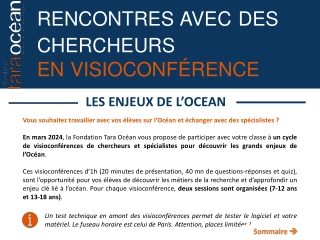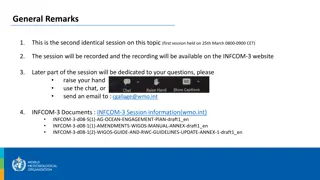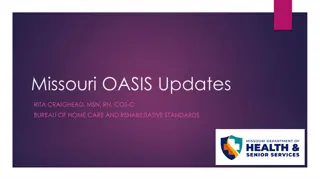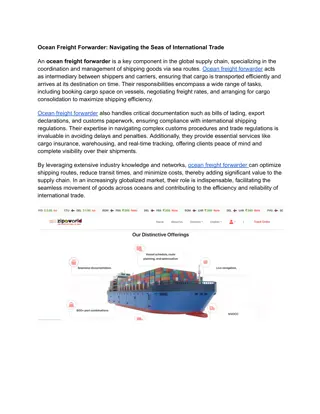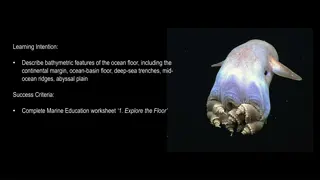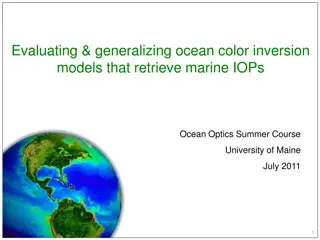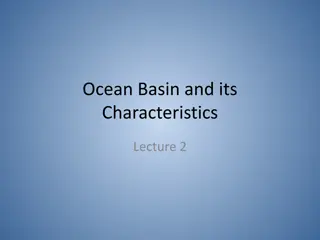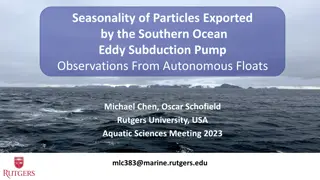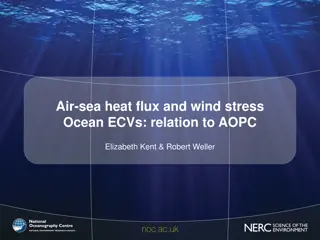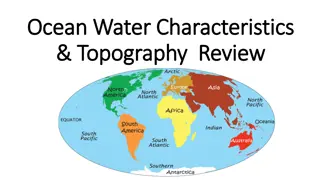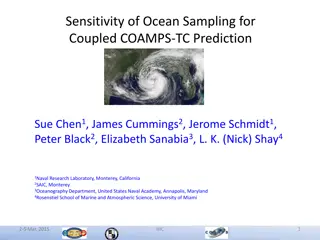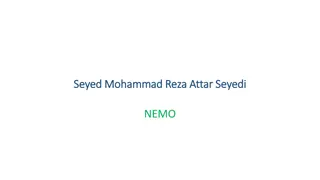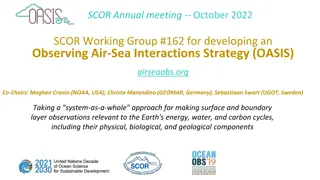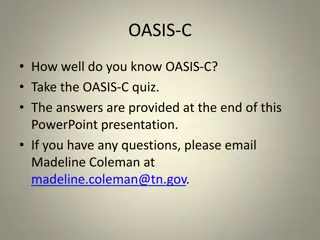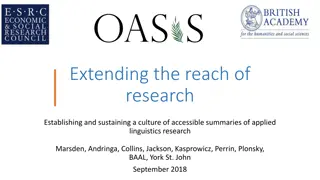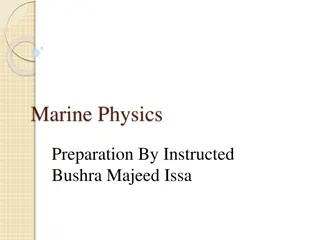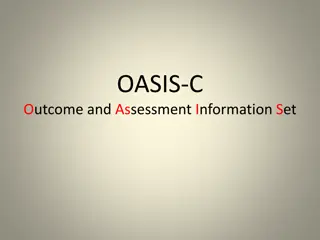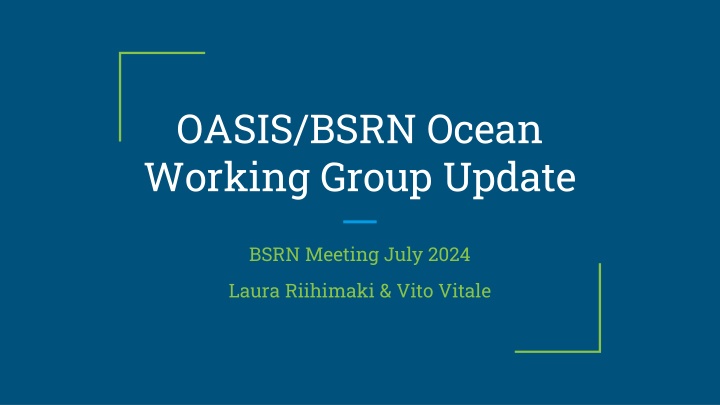
OASIS/BSRN Ocean Working Group Update - July 2024
Update on recent accomplishments and next steps planned by the Ocean Working Group, including publications, community of practice meetings, and initiatives to enhance radiation measurements on ocean-based platforms.
Download Presentation

Please find below an Image/Link to download the presentation.
The content on the website is provided AS IS for your information and personal use only. It may not be sold, licensed, or shared on other websites without obtaining consent from the author. If you encounter any issues during the download, it is possible that the publisher has removed the file from their server.
You are allowed to download the files provided on this website for personal or commercial use, subject to the condition that they are used lawfully. All files are the property of their respective owners.
The content on the website is provided AS IS for your information and personal use only. It may not be sold, licensed, or shared on other websites without obtaining consent from the author.
E N D
Presentation Transcript
OASIS/BSRN Ocean Working Group Update BSRN Meeting July 2024 Laura Riihimaki & Vito Vitale
Accomplishments Best Practices Paper published: https://www.frontiersin.org/articles/10.3389/fmars.2024.1359149/full Paper published in the Frontiers in Marine Science special edition led by the Ocean Best Practices Systems (OBPS) Paper endorsed by the OceanSites community, Global Ocean Observing System endorsement in process. Set up bimonthly Community of Practice meeting between BSRN scientists and ocean radiometer experts who make measurements on many different platforms -next meeting will be in August, date TBD. Contact Laura.Riihimaki@noaa.gov if you would like to be added to the mailing list.
Next Steps Activities planned by members of the community of practice Training session for ship-based technicians at RVTEC -Shawn Smith, Katie Watkins- Brandt, Laura Riihimaki Collaborate/feedback on new surface radiation observations being added to ocean-based platforms 8 NOAA ships to be outfitted with radiometers -Katie Watkins-Brandt NOAA NDBC planning to install radiometers on 48 buoys in the next 4 years -James Elliot NOAA Weather Program Office test of adding research measurements to a weather buoy in the Atlantic - NDBC/NWS/PMEL/WHOI Deploy and maintain ship borne Thermal and Infrared (FRM) Radiometers in VoS and RVs through International Ship Borne Radiometer Network. Placing radiation sensors on drifting buoys like Lagrangian drifting Buoy (Pradyu II) of NIOT, Ministry of Earth Sciences and multi sensors on SVP drifters. Maintain and extend radiation measurements on ships of opportunity (Vito Vitale, Angelo Lupi, see poster) Intercomparison Experiments
Example Intercomparison experiment from Meloni et al at Lampedusa (as described in her talk) Possible points of interest for radiation measurements on the ocean The nighttime offset of unventilated pyranometers on the ocean seems to be larger than that of ventilated sensors on land, with values beyond those of the BSRN physically possible limits . Rain produces spikes in the nighttime offset; The solar leakage on an unshaded pyrgeometer produces an increase in LW irradiance compared to that measured by a shaded instrument. This effect depends on the site position and season [Meloni et al., JTECH, 2012]; A webcam on the buoy helps interpreting the measurements.
Discussion Items for BSRN community 1. The Ocean Radiometer community has requested a radiometer instrument intercomparison against BSRN standards a. Would BSRN be willing to host a (possibly regular every few years) radiometer intercomparison where ocean community can send instrumentation to be intercompared against references? 2. How do we want to interact with ocean-based platforms and potential inclusion in the BSRN? a. Even for established ocean-based BSRN platforms, like the Chesapeake Lighthouse station, different techniques/requirements may be more appropriate. For example, Bryan Fabri s work with the Chesapeake Lighthouse station. Upwelling LW calculated from IRT more accurate than upwelling pyrgeometer measurements. b. What about platforms like long-term buoys that can t meet most BSRN standards? 3. Transfer recommendations in the paper in an analysis tool; develop standard analysis methodology 4. Other ocean based measurements: a. Cloudiness characterization/observations b. Spectrometric measurements over the oceans


